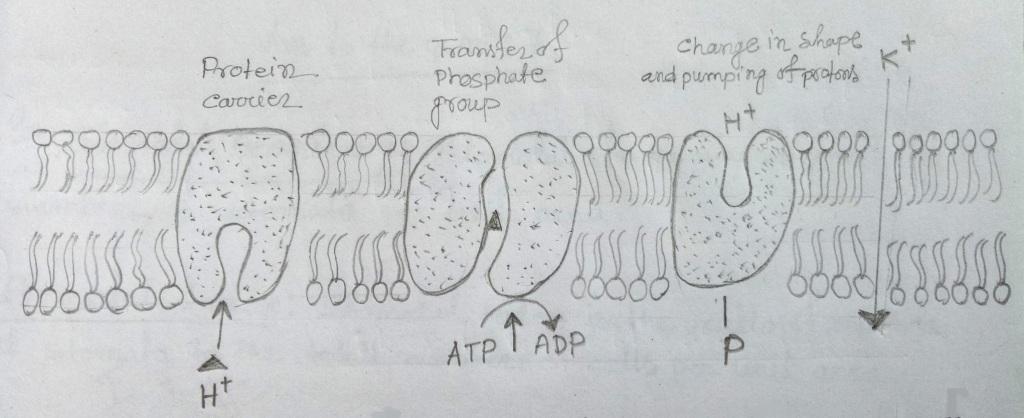Describe how active transport takes place across the plasma membrane in plants
The plant plasma membrane ATPase is a transmembrane protein. The enzyme exists in two conformations differing in catalytic & transport properties. In conformation I, the transport site faces the cytoplasm & has a high affinity for protons. In conformation II, the transport site is externally oriented & has low affinity for protons. The enzyme is forced to alternate between these two conformations & to bind & release the transported proton because neither conformation can affect the complete catalytic cycle. In conformation I, the enzyme acts as a kinase; after binding a proton it catalyzes the formation of phosphorylated intermediate. In the new state (conformation II) it acts as phosphatase & after releasing the proton it returns to its original state, conformation I. Thus, when steady state is reached, a proton gradient is developed, the concentration of protons being more goes outside of the membrane & less in the cytoplasm. This leads to the generation of proton motive force. The net result of the proton pump is the is that the pH of the medium outside the plasma membrane become more acidic & the cytoplasm more alkaline.

Fig: Active transport across the plasma membrane in plant
An enzyme that promotes hydrolysis of ATP in the presence of K^+ has also been isolated from plants. It is suggested that enzyme binds K^+ ion at specific site & changes conformation on binding ATP. After hydrolysis of ATP, it returns to its original conformation & ion is released to the other side of the membrane. Thus, the active transport takes place across the plasma membrane in plants.